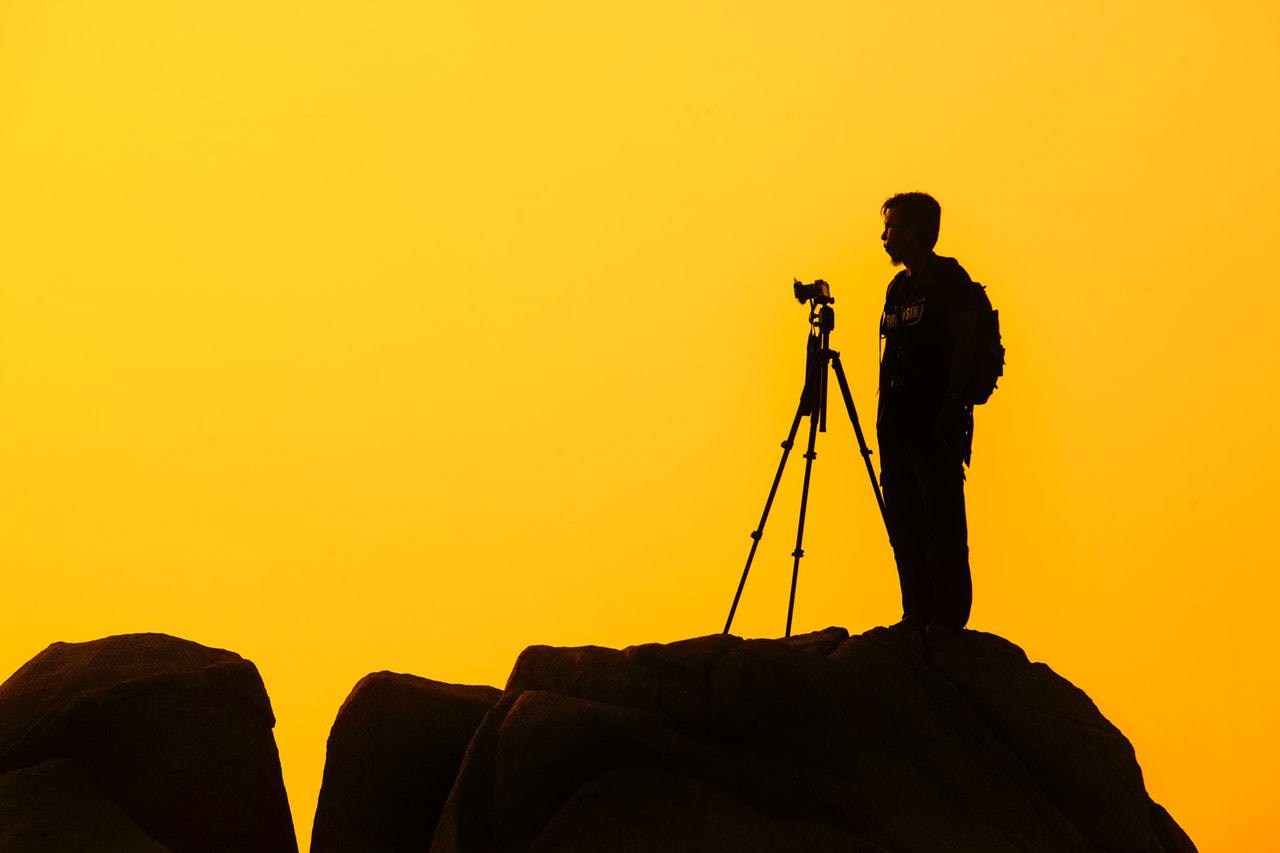If you’re looking for an affordable way to capture all of life’s precious moments, check out this guide to the best mirrorless camera under $1000.
There’s a wide range of mirrorless cameras on offer here in 2024, with some of them available for bargain prices.
DSLR cameras may still have their place, but it’s definitely wise to invest in the future of camera technology – and in this case, that happens to be mirrorless cameras.
So what can you get for under $1000? Let’s take a closer look at the best options of the year. Plus a bonus one that is a bit higher in price but worth the time to examine.
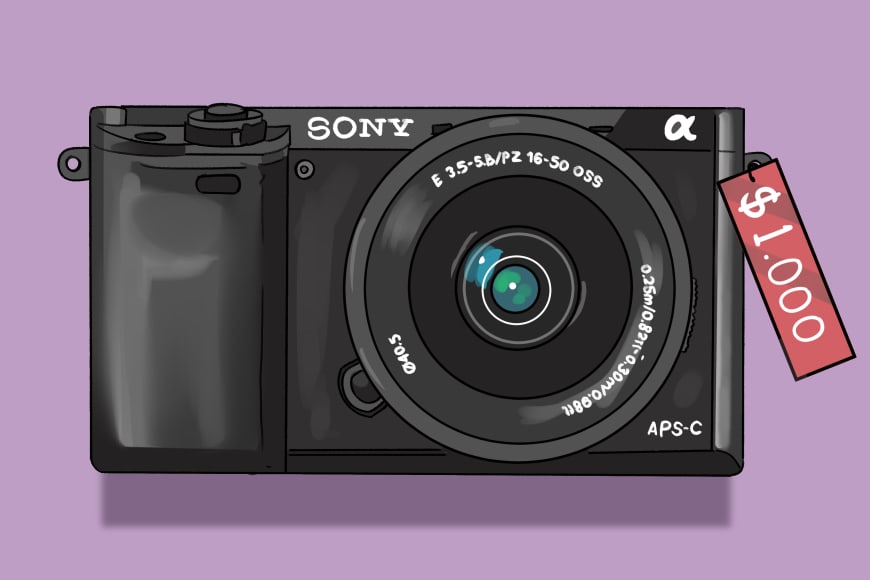
Our Top 3 + 1 Mirrorless Cameras under $1000 in 2024
- Canon EOS RP – Best Canon Mirrorless Camera under $1000
- Nikon Z 50 – Best Nikon Mirrorless Camera under $1000
- Sony Alpha a6000 – Best Sony Mirrorless Camera under $1000
Bonus:
The Best Mirrorless Cameras under $1000 in 2024
Canon EOS RP
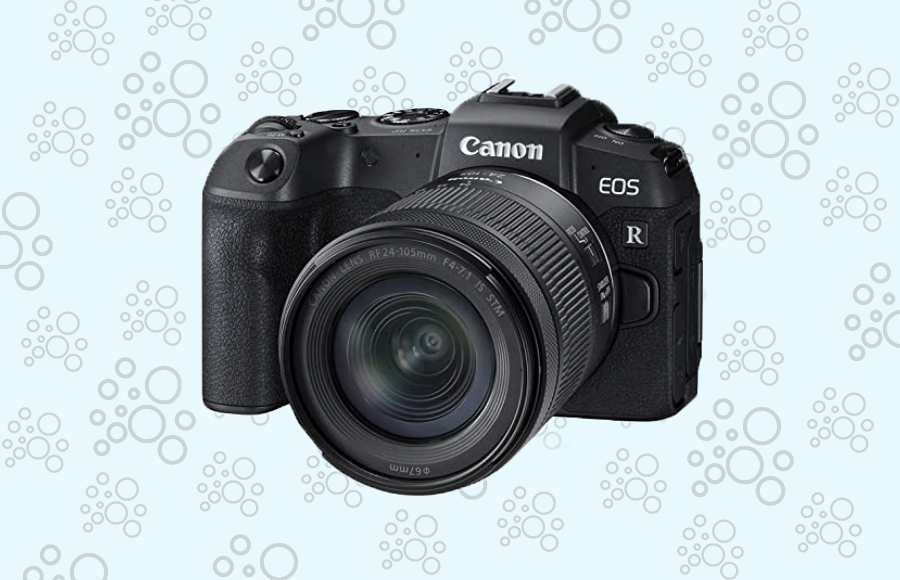
Best Canon Mirrorless Camera under $1000
Size: 2.8″ x 5.2″ x 3.3″
Weight: 1.70 lbs / approx. 440 grams (camera body only)
Sensor: Full-Frame CMOS Sensor
Megapixels: 26.2
The Canon EOS RP is light and compact entry level full-frame EOS camera. It has a 26.2 MP Full-Frame CMOS sensor, which is the same as 6D Mark II but optimized with speedy DIGIC 8 image processor.
The expanded sensitivity ranges from ISO 100-40000 (expandable to 102400).
The EOS RP has the RF Mount, which is compatible with RF lenses and EF/EF-S lenses (keep in mind that amount adapter is required), and it has 1 UHS-I SD card slot.
You will be able to shot at 5fps in one-shot mode, 3-4fps in speed priority mode, and only 1-2fps in Tracking Priority mode (which is pretty low and is good for sports photography, but keep in mind that it’s an entry level).
It has a 143 phase-detect AF points, Dual Pixel AF, Eye AF (but only in one-shot), and it has a Touch and Drag AF to help you move to where the focusing point are (nearly edge to edge focusing, 100% vertical and 88% horizontal coverage).
The EOS RP has 1.74 Crop 4K at 24fps (which creates extreme rolling shutter, and has Contrast Detection only), and the 1080 can shot up to 60fps.
The durable, compact body features a vlogger friendly 3″ 1.04M-Dot Vari-Angle Touchscreen LCD.
Keep in mind that if you will invest in the Canon system you will have the opportunity to grow to the much more advanced cameras like the R5 and the R6 and beyond in the future, as well as the vast lenses, Canon has to offer.
This camera will suite anyone with a budget for a cropped frame mirrorless camera, but really wants to have a full-frame sensor.
Macro shooters, lifestyle, travel, and portrait photographers will definitely enjoy the EOS RP. However, EOS RP will disappoint video and sport shooters.
You can check out our full Canon EOS RP Mirrorless Camera Review if you wish to get even deeper.
Nikon Z 50
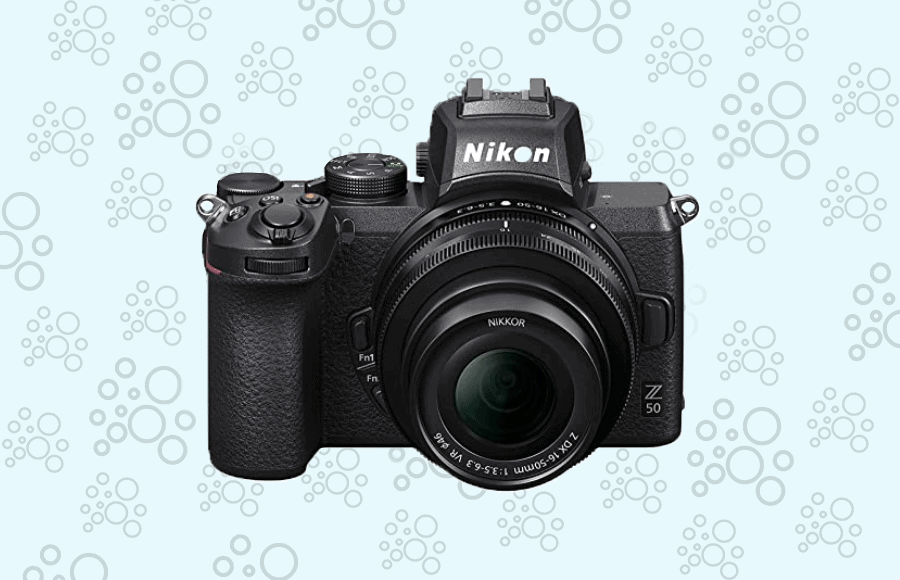
Best Nikon Mirrorless Camera under $1000
Size: 5.0″ x 3.7″ x 2.4″
Weight: 0.9 lb / 395 grams (camera body only)
Sensor: APS-C CMOS sensor
Megapixels: 20.9
The Nikon z50 crop sensor mirrorless camera is an entry level DX mirrorless camera. It is very similar to the Z6 and Z7 but smaller.
It has a 20.9 MP DX CMOS crop sensor. The ISO Sensitivity ranges from 100 – 51,200 in steps of 1/3 or 1/2 EV (expandable to 204800).
It has the Z Mount so you will be able to use all the Z lenses that will fit right in, and you can use a ZTF adapter so all the F lenses that will work with autofocus will still work with it on the Z50.
It has a 209 AF points that are covering most of the frame, but moving them around isn’t that comfortable so its easier to use the Auto-area AF face/Eye detection.
The Z50 has 2.6 million dots EVF that is smaller than the Z6 and the Z7 but its still sharp, colorful and clean.
The z 50 doesn’t have in-body image stabilization.
You will be able to shot at 5.5fps in the normal high mode, but you can get up to 11fps in continuous shooting speed.
On the back of the camera, you have a 3.2″ 1.04M-Dot Tilting Touch-Sensitive LCD (keep in mind that you can have an issue if you use a tripod it can block the screen from tilt all the way backward.
The Z50 can shot 4K at 30fps, and you can shot slow-motion video at 1080 at 120fps with no additional crop.
The Nikon Z 50 is a very capable mid-prices camera, it’s good for everyday shooting and travel, and it will be great for casual and enthusiast shooters.
You can check out our full Nikon Z 50 Mirrorless Camera Review if you wish to get even deeper.
Sony Alpha a6000
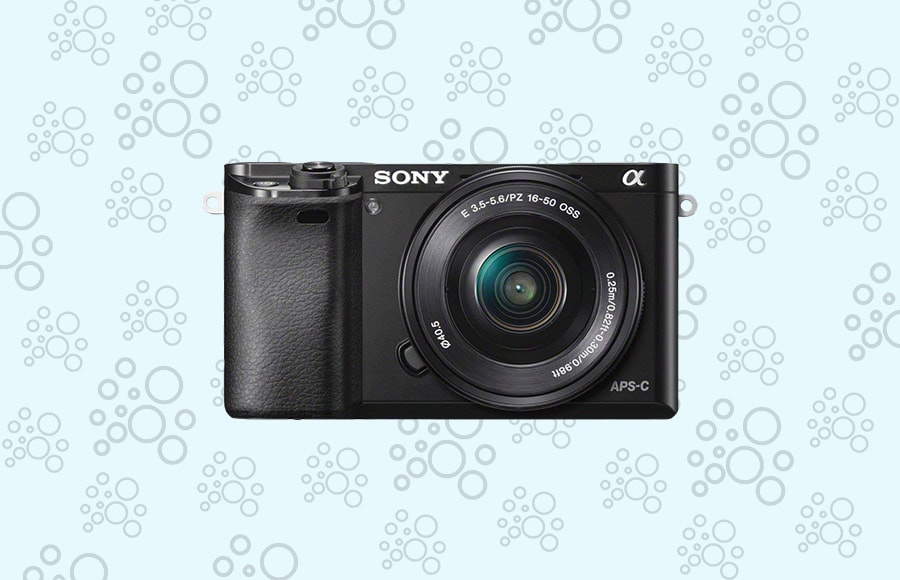
Best Sony Mirrorless Camera under $1000
Size: 4.72″ x 1.77″ x 2.64″
Weight: 0.76 lb / 344.74 grams
Sensor: APS-C CMOS sensor
Megapixels: 24.3
The Sony Alpha a6000 is one of the best selling cameras that Sony has ever produced and quite possibly one of the best selling mirrorless camera models to date from any brand. This is all for a good reason: as a versatile, easy to use camera that’s packed with features, the Sony Alpha a6000 absolutely excels. It’s great despite an extremely low price that sits not just below $1000 but also below $500. (and includes a 16-50mm kit lens).
The things we like about the Sony Alpha a6000 are many. This extremely compact gadget measures out at only 4.72 x 1.77 x 2.64 inches and is very light at just 0.76 lbs. However, inside its compact body, it packs a large 24.3 megapixel APS-C sensor with superb ISO that ranges from 100 or all the way up to 25,600 (with room for expansion to 51,200). The focus sensitivity range is good too, going from EV0 to EV20.
The Sony Alpha a6000 also comes with a hybrid AF that offers 179 focal plane phase detection points and 25 contrast detection points. This same AF was also the fastest in the world among compact cameras at the time of the Sony Alpha a6000 model’s release. It’s been superseded since then but the AF on this digital camera is still damn fast. Continuous shooting of up to 11 fps is also possible in this Sony model and the a6000 offers great shutter speed.
While mirrorless cameras don’t offer the battery longevity of their DSLR cousins, the Sony Alpha a6000 still manages to handle over 360 shots in RAW + JPEG format between recharges. If you don’t need exceptional quality for editing during a shoot, and switch over to just JPEG shooting or lower image quality (both of which can be changed in the cameras control menus) the shooting output between charge times can be increased quite a bit further.
Another thing that we love about the Sony Alpha a6000 is just how tough it is. I’ve owned one of these cameras for several years and it still functions perfectly despite numerous trips into the field, streets and during all kinds of wet, dry, hot, cold and humid weather. Despite a few nicks and dents, it still works perfectly along with its lenses.
The Sony Alpha a6000’s 3 inch tilting LCD screen with 921,000 dot resolution is good enough for accurate image rendering before shooting and the 0.39 inch OLED electronic viewfinder delivers clear, sharp composition quality . The LCD screen’s tilt and adjustment options are pretty limited but useful enough for basic camera positioning.
Most importantly of all, the Sony Alpha a6000 delivers superb image quality and is especially great for low light photography on a budget. Its ISO range is just good enough to capture both still life and movement under relatively poor lighting conditions. (you won’t get much quality out of it at the extreme 25,600 maximum of its ISO range though).
Sony has since replaced the Alpha a6000 with several generations of newer and even more refined alpha models that expand upon this edition’s features, but the original 6000 still holds its own weight exceptionally well on quality, ruggedness, shooting options and autofocus speed. We like this digital camera and I still happily use mine regularly for all sorts of street, studio and nature photography.
Panasonic Lumix DMC-G7
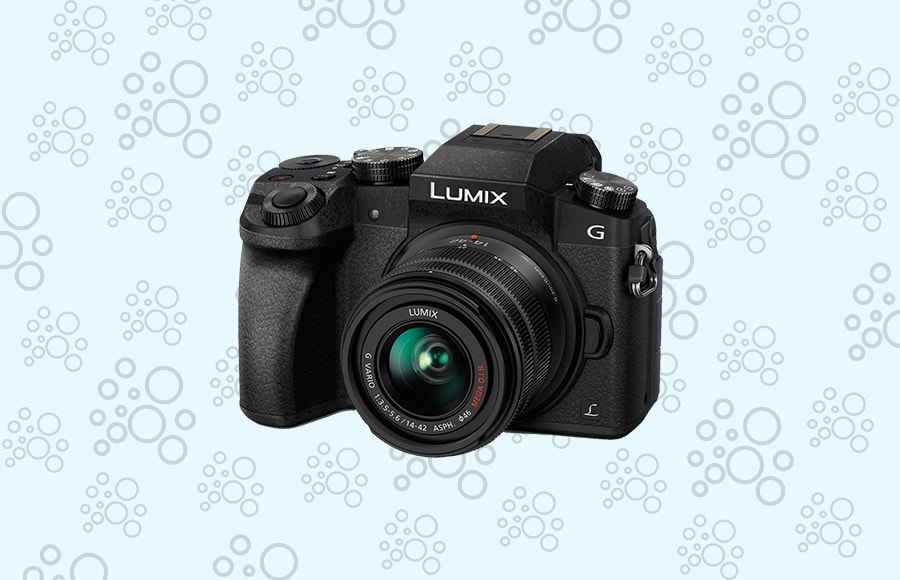
Size: 4.92″ x 3.03″ x 3.39″
Weight: 0.9 lb / 408.23 grams
Sensor: Micro Four Thirds sensor
Megapixels: 16
The Panasonic Lumix DMC G7 is one of the least expensive mirrorless digital camera models on this list. Despite this, its price should not at all make you think it lacks quality. The Panasonic Lumix DMC G7 absolutely does deliver on a ton of specs and features.
For starters, this is one hell of a 4K video recording device. Most mirrorless camera models today offer this feature now but the Lumix lineup has been doing it for a while and Panasonic has nicely perfected the technology because of this. In the case of the Panasonic Lumix DMC G7, you truly get some stellar ultra HD video performance along with plenty of 1080p HD shooting chops.
The Panasonic Lumix DMC G7’s 4K video capacity is also extremely relevant even if you just want to focus on shooting great photos. The Lumix G7 offers the ability to extract bursts of still shots from the 4K video you capture with it and it offers this in three different modes.
One of these is for continuous shooting, the other lets you start and stop your bursts on the fly and a third setting offers 1 second shooting prior to shutter release for a full load of 60 individual frames. With all three modes, you can extract nice, crisp 8 megapixel photos of wicked action sequences.
Moving on to the Panasonic DMC G7 camera’s more standard photo specs, what we get with it is a solid weather resistant body design that’s typically compact in true camera mirrorless style. Over 24 compact lens variants are also available to complement this little photo/video beast, so you should have no shortage of experimental options if you buy enough of them. The button and dial controls all over the Lumix G7’s body are also very intuitive.
The Panasonic Lumix DMC G7 digital camera offers a slightly smaller-than-average Micro Four Thirds sensor that only delivers 16 megapixels of maximum photo resolution, but it compensates for this with excellent image processing and some superb photo specs that include a wide 160- 25,600 ISO range, 1/16,000 electronic shutter speed, superb 8fps burst shooting at full resolution (6fps with continuous AF) and seven-frame bracketing for action shots.
In terms of display and control features, the Panasonic Lumix DMC G7 offers a 2360k dot electronic viewfinder with 10,000:1 contrast OLED display with superb brightness and 0.7x magnification. You’ll probably also like the 3 inch LCD display that complements the EVF on the Panasonic G7. It offers 1,040,000 dot resolution, full touch control functionality for easy settings changes and has very flexible adjustment options that include flipping outward or being flipped inward to protect it while you move around in the field.
Both the viewfinder and screen of this little camera offer up a great photo adjustment and shooting experience. We like it more than that of the Sony cameras ranked above and the visuals inside the electronic viewfinder look exceptionally crisp and bright.
Overall the Panasonic Lumix DMC G7 mirrorless camera is truly exceptional at capturing 4K video and offers some incredible UHD photo burst shooting options that few if any other mirrorless models manage to deliver at the G7’s extremely affordable price. It may not match the sheer photographic detail of most mirrorless alternatives with 24+ megapixel resolutions or especially a full-frame camera, but it compensates in many ways.
Panasonic Lumix DMC-G85
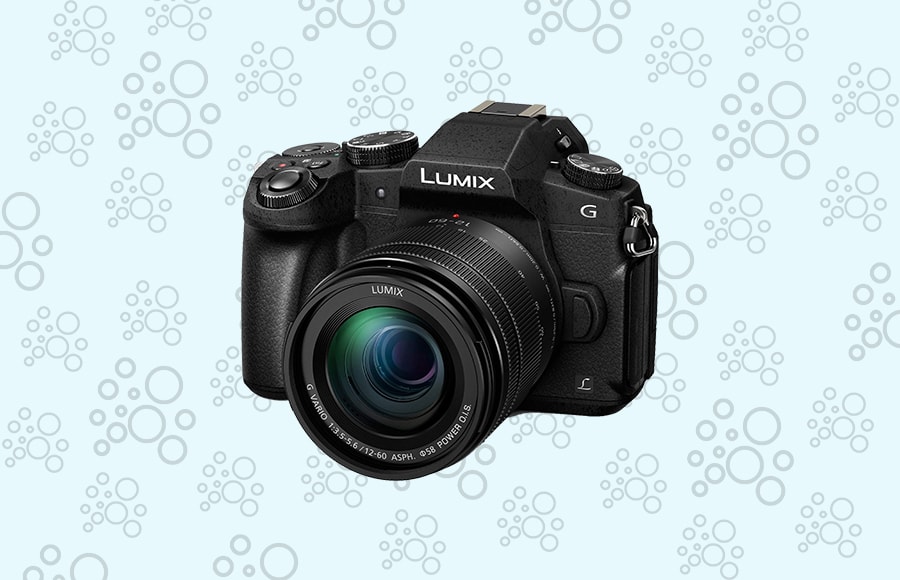
Size: 2.93 x 5.06 x 3.5
Weight: 1.11 lb / 503.48 grams
Sensor: Micro Four Thirds sensor
Megapixels: 16
With the Panasonic Lumix DMC G85 camera, what you get is an experience that’s similar to that of the Lumix G7 mirrorless cameras we ranked above but with some additional specs, features and a higher price tag. This camera is still very affordable for all the quality it offers, and we love its strong range of specs for handling both high quality photo and video recording.
Basically, the Panasonic Lumix DMC G85 offers much of the same focus on superb 4K UHD video shooting and photo burst extraction from 4K that the G7 does. However, it comes with a few more options for doing both of these things. The most notable among these is the G85’s ability to not only capture its normal 30fps burst mode 4K image shots but also take extra 5-second 150 frame bursts of 4K (8 megapixel) photos and save them up for later downloading to a computer. This dramatically expands how many still shots you can get from an individual 4K UHD photo burst session.
Just like the Panasonic Lumix G7, the Panasonic Lumix DMC G85 comes with a Micro Four Thirds sensor and 16 megapixel resolution. It also offers nearly the same ISO range, but instead of 160 it starts at 200 and goes up to 25,600. This Panasonic camera’s photographic performance is mostly identical to that of the G7 as well, with a 1/16,000 electronic shutter speed and the same sensor resolution.
In other respects however, it beefs things up. In our impression, its image quality is definitely a bit better and this is due partly to better image processing refinements and also because the Panasonic Lumix DMC G85 comes with dual I.S. 2 5-axis stabilization technology for more stable photography across the board. Panasonic also upped the burst shooting speed of the Panasonic Lumix DMC G85 by taking it to 9fps, vs the 8fps of the DMC G7. The difference is small but every frame counts.
According to Panasonic, the G85 can deliver an AF speed of just 0.07 seconds. We have a hard time believing this since the camera happens to lack on-sensor phase-detect, but it’s AF is indeed damn fast. What we also noticed is that the AF system of the Panasonic Lumix DMC G85 works amazingly well under some seriously low light conditions And by low we mean really dim. Like the G7 , the G85 can go as low as -4 EV on low-light autofocus sensitivity, which is damn impressive. To top this off, the Panasonic Lumix DMC G85 has Panasonic’s Starlight AF mode, which lets the camera set focus even from the dim light of stars in the sky.
Another major improvement that the Panasonic Lumix DMC G85 offers over the G7 is its buffering capacity for RAW images. With the G7 model, buffer depth would top out at about 18 images in RAW format and around 240 JPEG photos. The G85 can manage a whopping 60 frames worth of RAW buffer depth and 300+ JPEG shots. This is great.
You’ll probably also appreciate the Panasonic Lumix DMC G85’s cool and very handy power saving mode for longer battery life. This lets you shoot out in the field or on the streets with less worry about running out of charge. The camera saves energy by powering down into sleep mode after anywhere from 3 to 5 to 10 seconds without being used. This can be adjusted in the Panasonic Lumix DMC G85’s settings. Setting up the power saving mode does however mean you need to make the electronic viewfinder and its live view to only activate with eye detection.
Speaking of EVF and LCD display in the Panasonic Lumix DMC G85. Both are similar to those of the G7 with touch functionality, nearly identical resolutions and the same level of magnification and brightness in the OLED EVF.
One further thing we like enormously about the G85 is that it’s heavily weather-sealed. This camera handles wet, cold, humid and even soaking working conditions really well without noticeable screw-ups in how smoothly it operates. It’s also roughly enough built to handle most moderate bumps, scrapes or drops.
The bottom line for the Panasonic Lumix DMC G85 mirrorless camera is that its superbly good and it does definitely offer features that go beyond what the Panasonic Lumix DMC G7 can pull off. However, its basic image processing qualities and maximum resolution are the same as they are in the G7. In other words, unless you need it’s extra features and details, you could just as easily save a couple hundred dollars by buying the older Panasonic G7 model.
Fujifilm X-T30
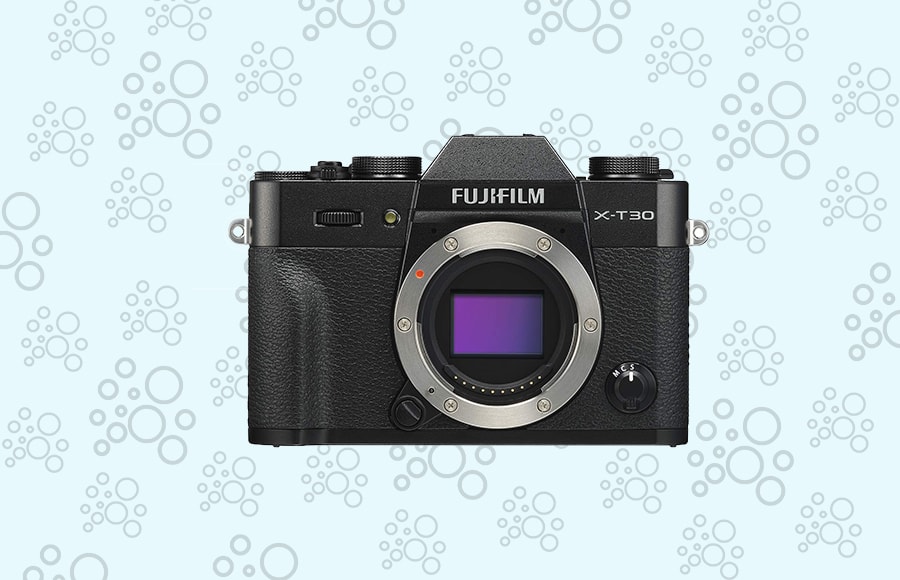
Size: 7.91″ x 6.89″ x 4.96″
Weight: 0.84 lb / 382.72 grams
Sensor: APS-C X-Trans CMOS 4 sensor
Megapixels: 26.1
As the smallest of the mirrorless cameras under 1000 on this list, the Fujifilm X-T30 weighs far less than most DSLR models.
However, despite its lightness, the Fujifilm X-T30 packs a lot of good stuff under the hood. It’s almost a wonder of a camera under 1000 dollars in price. This edition offers the largest APS C image sensor of all the models we’ve compared here, inside its camera body. It delivers 26.1 megapixels of razor sharp resolution and superb dynamic range with its image sensor. Furthermore, the Fujifilm X-T30’s autofocus delivers a whopping 425 phase detection points, making this camera come close to Sony’s very best pro mirrorless models on AF power.
In fact, the Fujifilm X-T30 basically offers the exact same sensor as the top-shelf Fujifilm XT3 model but at a price tag that’s several hundred dollars cheaper.
This ultra-compact mirrorless model delivers some great 4K and HD 1080P video performance too, mainly by being able to shoot ultra HD at 30fps and 1080p footage at a speedy 120fps, which means that it can also capture slow motion video. Panasonic’s Lumix G7 and G8 cameras completely outdo the Fujifilm X-T30 at 4K recording due to their advanced 4K photographic modes and extraction capabilities but this camera body still impresses.
More importantly though, we like the Fujifilm X-T30 for its qualities as a photo camera. These are what it truly excels at and in many respects, the Fujifilm X-T30 is very similar in performance and handling to one of Sony’s alpha series editions. The a6400 would probably be its closest rival. Unlike the X-T30, the a6400 does usually come with a kit lens as a retail offer.
As we already mentioned, the X-T30 offers a 26.1 MP APS C image sensor with a total of 425 phase detection points across its entire surface for this camera’s incredibly fast autofocus to work with.
The overall image quality of the Fujifilm X-T30 is excellent too. colors are reproduced crisply and with wonderful accuracy, and the camera handles low light shooting exceptionally well, which we expected of it with the kind of high quality sensor and reasonably broad ISO range that this model offers. Helping this low light shooting capacity is an EV rating that goes as low as -3EV. That’s exceptionally good.
Another thing that you’ll probably really like about the little Fujifilm X-T30 is just how well designed it is physically. This really small camera doesn’t have the kind of weather sealing that some other models in this post, or from Fujifilm, offer but it does come with a great button and dial layout that lets you select shutter speed, exposure and other key shooting controls quickly and easily. Considering how tiny the Fujifilm X-T30’s body is, the controls are easy to handle without making mistakes, which is a win for Fujifilm ergonomics.
What the Fujifilm X-T30 also handles really nicely is its continuous shooting parameters. In these it offers up a very impressive 30fps with a 1.2X crop factor so long as the viewfinder is deactivated and the electronic shutter enabled. With a viewfinder and with mechanical shutter this little Fujifilm still delivers a respectable 8fps without crop. RAW image buffer capacity isn’t bad in general. At 18 frames, it will handle enough images at a time for most users’ needs.
On a final note, the EVF of the X-T30 is a bit small and with a bit less magnification than we’d like, but it still offers strong brightness, high contrast and a great resolution of 2.36 million dots. The LCD screen comes with touch functionality and decent enough flexibility for extension in different directions, while its resolution is okaygood at 1.04 million dots.
Sony a7 II
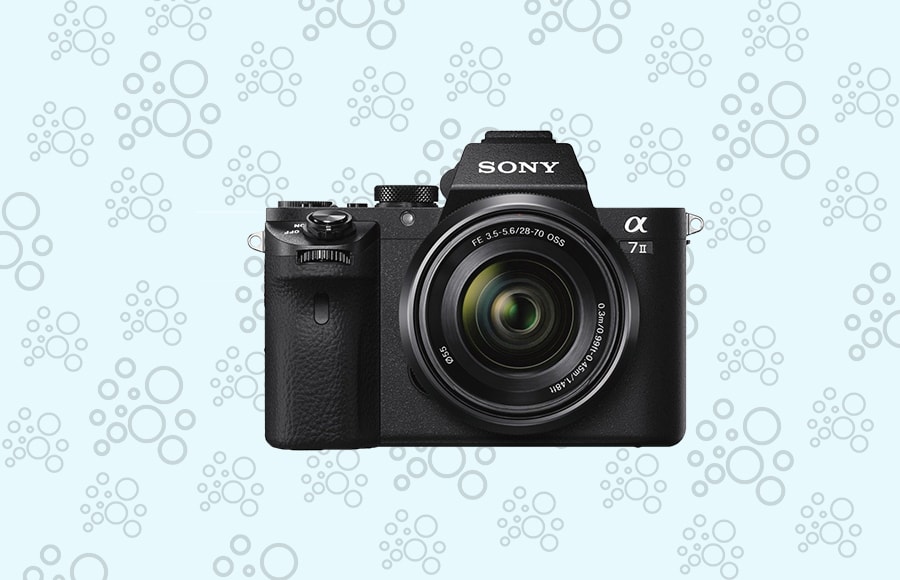
Size: 5″ x 2.36″ x 3.78″
Weight: 1.32 lb / 598.74 grams
Sensor: APS Exmor CMOS sensor
Megapixels: 24.3
Though this camera is a bit higher in price, its worth seeing how Sony continued to advance the quality of its mirrorless camera designs with the Sony alpha7 II, showing just how nicely ahead of the curve the brand has been in this field for a while. The Sony a7 II has since been succeeded by the alpha7 III model along with other newer editions in the A7 lineup but it still delivers quality exceptionally well for almost any amateur, semi-pro, or a professional photographer.
The Sony a7 II’s 24.3 MP Exmor CMOS sensor couples together with a still advanced Bionz X image processing engine for superbly stable, high quality photos. Internal 5-axis image stabilization that offers 4.5 stops of image stabilization for pitch, yaw, horizontal shit, vertical shift and roll contributes to this little mirrorless camera’s capacity for delivering strong image quality even if you’re using it under difficult shooting conditions.
The Sony a7 II’s Enhanced AF Hybrid system with 117 phase detection focus points and 25 contrast detection points delivers wonderful focus tracking too. The camera can also deliver 5 fps continuous shooting with continuous AF without a problem. It’s not as fast as the cheaper Sony alpha a6000 we ranked just above in this post but the Sony alpha7 II handles amazingly well and comes with much more advanced photo stability options.
What we also love about this addition to the Sony A7 lineup is its ruggedness. The Sony a7 II is not only just as tough during heavy duty field use as the a6000, it also comes with the additional bonus of weather sealing, making sure that it doesn’t suddenly fail on you just because you’re taking some awesome shots during a rainstorm or on a freezing, snowy day.
Like almost all mirrorless camera models, the Sony a7 II doesn’t offer quite the battery life that you’d get from your typical DSLR such as one of the Canon EOS models, but it still pulls off a decent range of photos between charges. If you’re using it to take full resolution RAW image/ JPEG combo photos, it can deliver up to 360 shots, and shrinking photo quality down while also removing the RAW option lets you stretch this out to several hundred more shots.
The 3.0 inch LCD monitor of the Sony alpha7 II offers a great 921,000 dot resolution and has some slightly limited tilting options, while the 0.5 inch 2.3 million dot OLED XGA EVF of the camera offers lots of comfortable eye room. We also liked this camera’s control button layout and the onscreen menu options are easy to get used to after a bit of practice.
The Sony a7 II is also a decent (but not fantastic) video recorder, with the ability to capture up to just under an hour of full HD 1080p video at a time at 60p 30p and cinematic 24p. 4K video isn’t available however, for that you need to upgrade to the Sony alpha7 III.
One major thing we like about the Sony a7 II (that we also like about many mirrorless cameras) is just how compact and easy to handle it is. The control dials and buttons are mostly placed where they don’t get in the way or accidentally moved while you’re concentrated on shooting, and the camera itself is extremely light and easy to handle at a stretch. Again, this camera handles really well under rough conditions for its price.
In terms of photographic performance, the Sony a7 II is a high caliber device. This camera delivers rich colors and great accuracy while also being exceptionally good for low light shooting. This pulls off partly due to its image stabilization technology and partly because of its broad ISO range of 100 to 25,600. Unfortunately, the Sony a7 II doesn’t come with an ISO dial, which is annoying, but this is a minor issue.
More negatively, the Sony a7 II isn’t a top-notch action shooter or particularly good for sports photography, due to its 5fps burst limit. In this it doesn’t even match the much more affordable a6000 camera we covered above. We also really don’t like the fact that it lacks a built-in flash (strange omission indeed). It would also have been really nice if the Sony a7 II came with a silent shutter mode, for when you want to take a surreptitious shot in just the right moment without your target noticing.
Overall, we love Sony a7 II mirrorless cameras. They have their little defects and lack some fundamental things for their price, but this is one superb beginners semi-pro camera with plenty of versatility and far more strengths than weaknesses.
Frequently Asked Questions
Which is the best mirrorless camera in these rankings?
That’s a really difficult question to answer. All of the models in this guide are excellent choices as very versatile mirrorless compact camera editions for a moderate budget. The Sony a6000 and the Sony a7II both offer good low light performance combined with excellent sensor resolution, but Panasonic’s G7 and G85 editions deliver great specs for dim environments too, though their sensor resolution is smaller.
The a6000 has some of the best autofocus performance of all the models listed here while also being a camera that costs way less than $1000, but it doesn’t deliver nearly the same number of AF phase detection points as the Lumix G85 or the Fujifilm X-T30. As you can see, there are strengths and weaknesses all around.
If I had to pick one single model among the above as my overall favorite, I’d go for the Sony alpha a6000 edition because I personally have the most experience with it. In more objective terms however, the Sony A7II is probably the best overall performer.
Why Should I pick a mirrorless model over a DLSR?
You shouldn’t. Instead, you should pick what fits your needs best and makes you comfortable with its performance. With that said, high-quality DSLR cameras are bulky and tend to cost a lot more than mirrorless editions with comparable performance. They also tend to offer inferior low light photo quality compared to their mirrorless cousins. In this, the different camera editions we presented here excel: being small, more affordable, and with superb picture delivery specs compared to any similarly priced DSLR.
Particularly for street or documentary photographers who want a camera with an unobtrusive presence but high quality performance under variable conditions, mirrorless is the better technology in a camera.
Do mirrorless cameras produce better images than DLSR models?
Both mirrorless cameras and DSLR models can produce comparably superb photos. However, if you compare quality with price taken into consideration, DSLRs that deliver perform as well as most mirrorless editions that cost $1000 in 2019 or 2020 tend to cost a fair bit more.
The mirrorless editions featured at the prices in this guide, all costing well below $1000, tend to perform much better than any similarly priced DSLR.
What’s the big difference between Mirrorless and DSLR?
The most fundamental difference between the two photographic camera designs is that your typical DLSR, such one of Canon’s very popular EOS cameras, comes with an internal mirror which deflects light from the lens to the sensor. A mirrorless camera on the other hand has no mirror. The light that goes through the lens travels straight to the sensor. This is why cameras such as the Fujifilm T-X30 and others we covered above, or an Olympus E-M10 model 8for example) can be much smaller than even a compact DSLR camera.
Final Words
On a final note, you should keep in mind that all of the cameras we ranked in this guide offer excellent general photographic performance. They all have their weaknesses, yes, but also their own much wider range of strengths. So if you want one specific camera but can’t decide which, think of what the thing you’d most like to do with it is and choose based on that.

